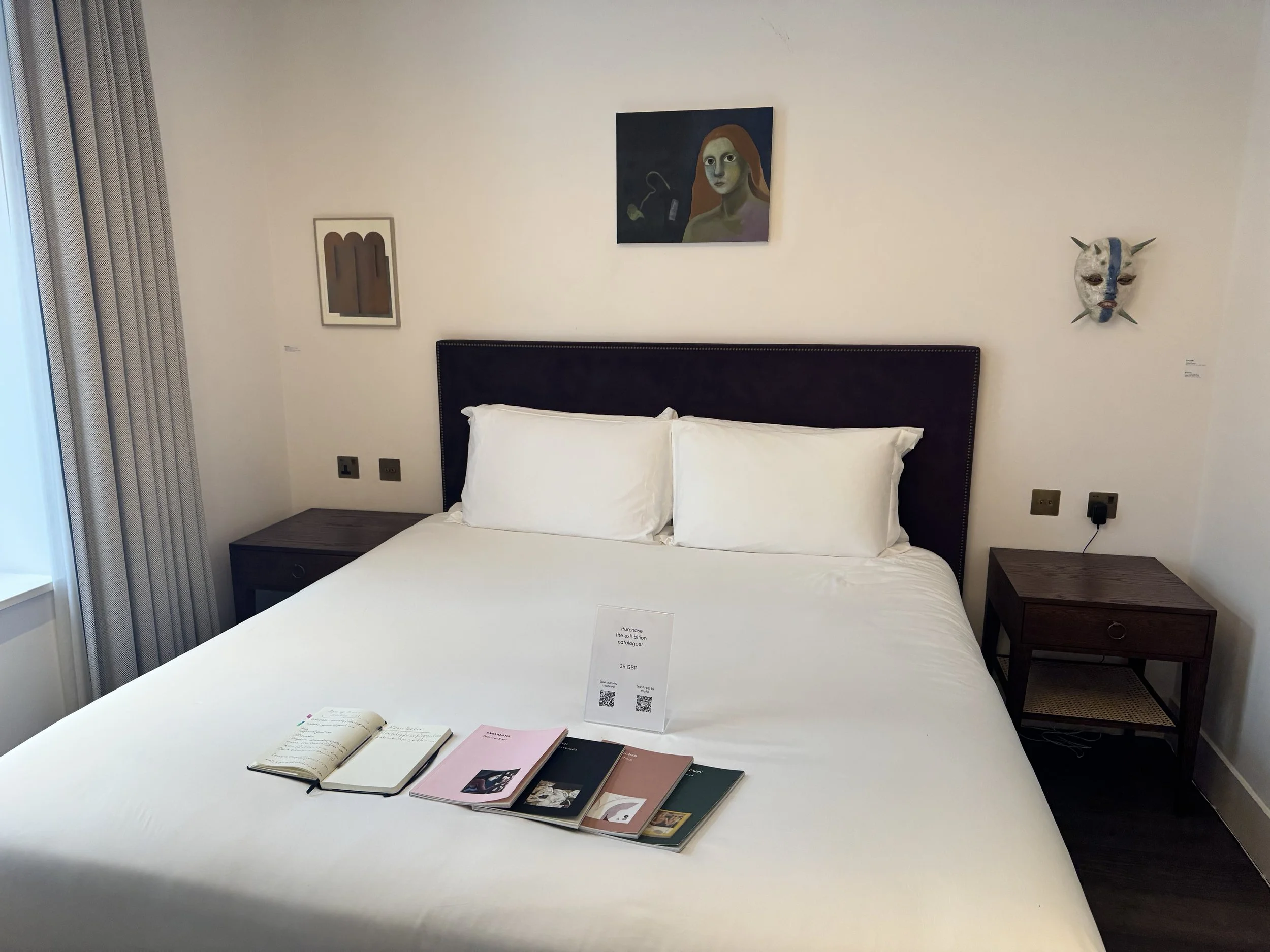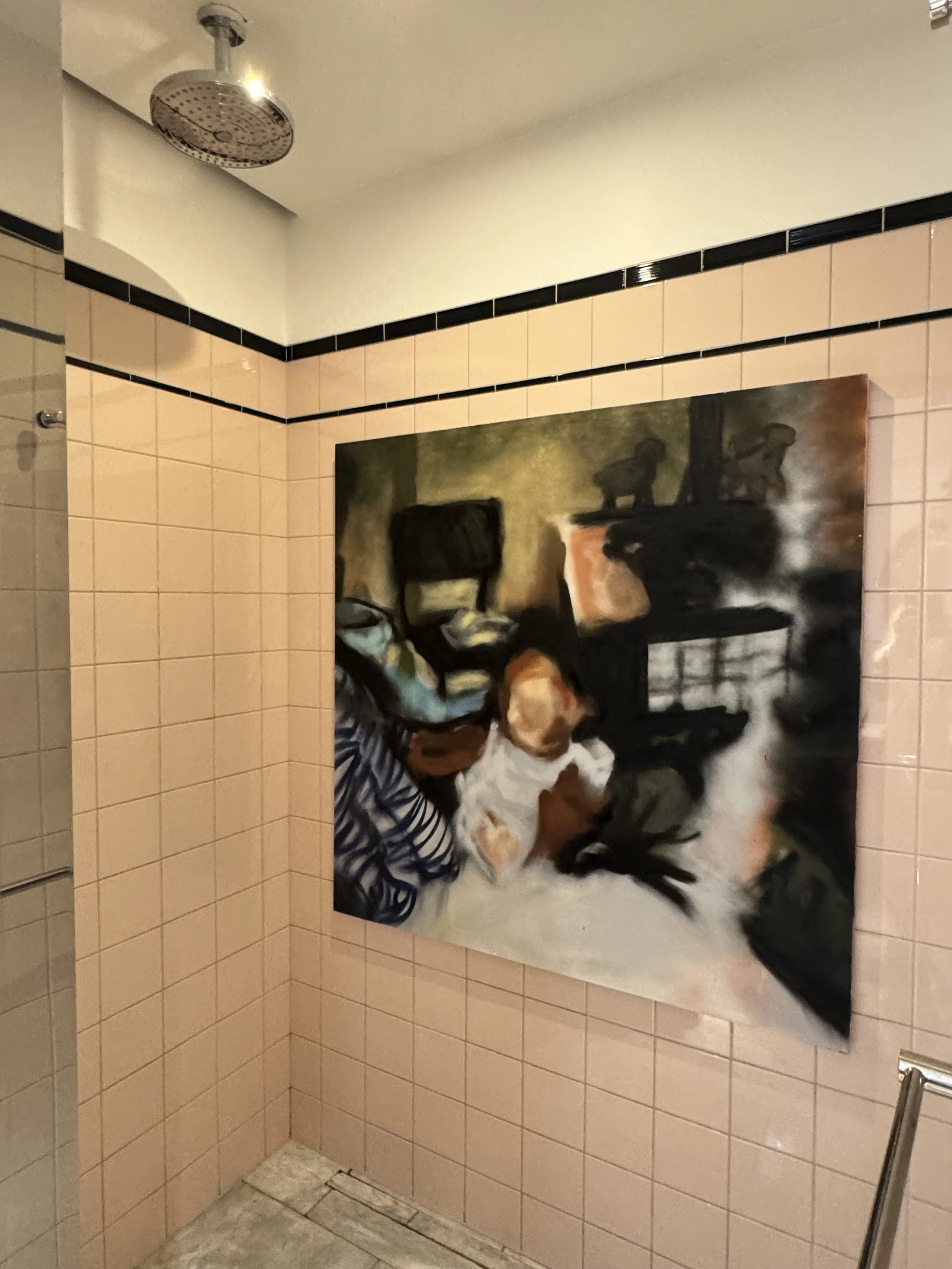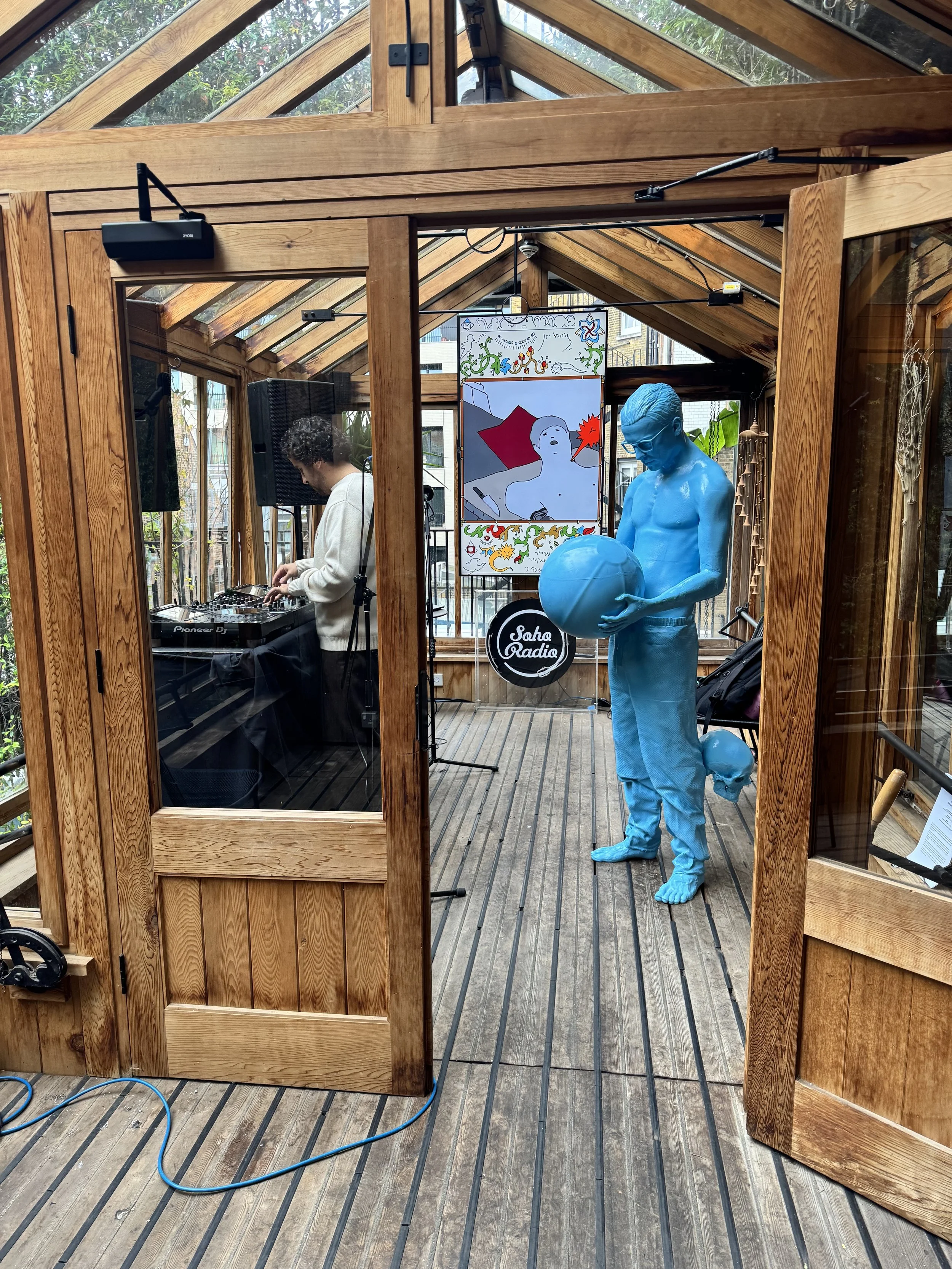Minor Attractions 2025
The modern art fair model has become so ubiquitous that even first time visitors know what to expect regardless of the city, size or theme they’re attending. In fact the only real operational difference between behemoths like Frieze and smaller independents is the price and quality of the snacks they’re selling. That’s why three-year-old Minor Attractions is such an exciting new venture: they’re specifically going out of their way to do things very, very differently.
This year’s iteration saw 70+ galleries participate and for the second year in a row it was hosted at The Mandrake, the kind of venue where if your husband says he’s staying there while on a London business trip you should worry that he won’t be sleeping alone. The hotel’s risqué vibes are a perfect match for the disruptive approach to art fairs that Minor Attractions is promoting. Works are placed in the communal terraces, central staircase and 15 guest rooms and the experience for visitors is immediately, obviously and often awkwardly different than any art fair you’ll encounter in London. That’s a sentiment echoed back to me by fellow critics and many of the galleries I interviewed.
Room 01 - Fabian Lang Gallery
If you attended last year you’ll have instantly noticed some welcome improvements. Fair submissions are no longer competing side-by-side with the hotel’s permanent collection, having been consolidated into destination locations. There was also more thoughtful and clearly labeled signage throughout, which considerably eased the process of navigating the Mandrake’s warren of dimly lit corridors. Alas, those all-black halls can still pose a challenge.
I heard some visitors had trouble finding their way to the rooms at the back, and the stairwell in particular was commonly cited as a less than ideal place to view art. It’s steep, it’s narrow and it’s impossible to get a head-on view of anything without painfully turning your neck or precariously balancing between two steps. Even then your eyes will be less than a foot away from the works and you’ll be lucky to get 30 seconds to examine anything before someone tries to squeeze by. That being said, quite a few of the galleries that I spoke to specifically participated in the fair because the group show nature of the communal displays meant they could promote their artist(s)/gallery without having to be physically tied to a booth for five days. Lucas Giles from Palmer Gallery said they intentionally entered a single experimental artwork with sound because despite being a hard sell they knew that if it was in a good position they might meet good people.
The bulk of the contributions were placed inside the guest rooms, where art and awkwardness fight for your attention thanks to the logistical limitations of a central London hotel where the largest room is a Small. If you were there for a romantic couples getaway you’d call them ‘cosy’ but when you and a gallerist are trying to navigate your way around a space that’s 85% occupied by a bed the kindest word to use is cramped. Two galleries actually removed the beds from their rooms. (Where did they put them?) In most of the rest I had to debate whether or not I really wanted to take off my shoes at an art fair in order to climb atop the mattress to see the works hung above the headboard.
I walked into one room to find the gallerist casually sprawled out on the duvet. Most of the invigilators stood patiently in a corner or sat on chairs they had dragged into the hallway. In one room the gallery director was apologetically flustered and mildly anxious for me to leave because their room service lunch had just arrived. Any room that already had 4-5 people inside led to a queue to avoid overcrowding. George Mingozzi-Marsh from Brooke Benington commented that the rooms create “a more active, fertile environment for conversation, even if it starts from an awkward encounter” and indeed a large part of the fun is that you never knew what to expect.
I spent a lot of time squeezing into the tight spaces between bed and wall, my nose practically pressing into the artworks, and on one occasion I got trapped in a shower after an opportunistic gallerist followed me in and blocked the doorway while they proceeded to over-explain everything until they ran out of steam. It was a risk I continued to take because the bathrooms were where some of the most creative displays could be found. I wondered what might happen should someone accidentally turn on the water and one invigilator quietly admitted they were using the shower each morning, but only after carefully covering the artworks.
Room 05 - Bolanle Contemporary (This is NOT the shower that I got stuck in!)
Cedric Bardawil (of his eponymous gallery) admitted that the small room he shared with another gallery was especially hard to manage during crowd swells, but the more relaxed environment often led to longer and more meaningful chats. A handful of people stayed in his room for over an hour, and he was particularly positive about the venue’s close location to Frieze, which helped deliver a steady stream of high calibre guests. Cedric noted that he was able to engage with “people I had been trying unsuccessfully to get into the gallery for a long time.”
An art fair is primarily a commercial enterprise that also provides invaluable opportunities to establish connections with new artists, artistic institutions and press. Many of those crowds are drawn by Minor Attractions’ accompanying programme of music, film, talks and performances. In an interview with the All About Art podcast, co-founder Jacob Barnes stated it’s one of the things they’re most proud of and it’s specifically why some galleries participated. Sarah Le Quang Sang from SLQS Gallery praised the inclusion of a dedicated Moving Image theatre that ran throughout the fair. The very low entry fee for digital works made it a no-brainer to enter, providing an incredibly cost effective way for SLQS Gallery to expose a wider audience to the films from their online Screening Room.
Although I poked my nose into the theatre I didn’t fully engage with that or any of the social or evening events. As a collector/critic I have no interest in a live DJ set but buzzy happenings are a large part of London’s art scene and certainly helped keep Minor Attractions in the public spotlight during Frieze week. Whether or not the happy-hour crowds that staggered into the rooms during evening viewings convert into paying collectors remains to be seen.
Aside from the challenges inherent in the host environment, and a few comments about some organisational issues mostly attributed to the fact that the fair team is small and over-stretched (the co-founders each run their own gallery), everyone I contacted was incredibly positive. George Mingozzi-Marsh praised Minor Attractions for remaining independent and offering a counterpoint to the “sterile corporate environment” of global fairs, and noted that the more fun and relaxed approach creates a much lower barrier to entry for people new to the scene. It definitely helps that it’s free to visit, but by now you’re probably wondering: what about the art?
The reason I haven’t described any of the works is because it’s an art fair. Everyone who attends will very likely stumble upon something they like, or possibly even love enough to acquire. But to do that you’ll need to fully embrace the quirks. My advice, especially for shy or introverted art lovers, is to bring along a wingman/wingwoman. You might need them to help you escape the bathrooms!
Rump Gallery’s Director, Jodie Braddick, said many people reached out about Alex Ford’s The Shallow End (above) thanks to its prominent placement in the hotel’s terrace greenhouse.
Plan your visit
‘Minor Attractions’ ran from 14-18 October 2025.
Entry to the fair and all the events was free.
Visit minorattractions.com and follow @minor.attractions on Instagram for more info about the fair.
Want more London art news and reviews?
Subscribe to the Weekly Newsletter. It’s FREE!



